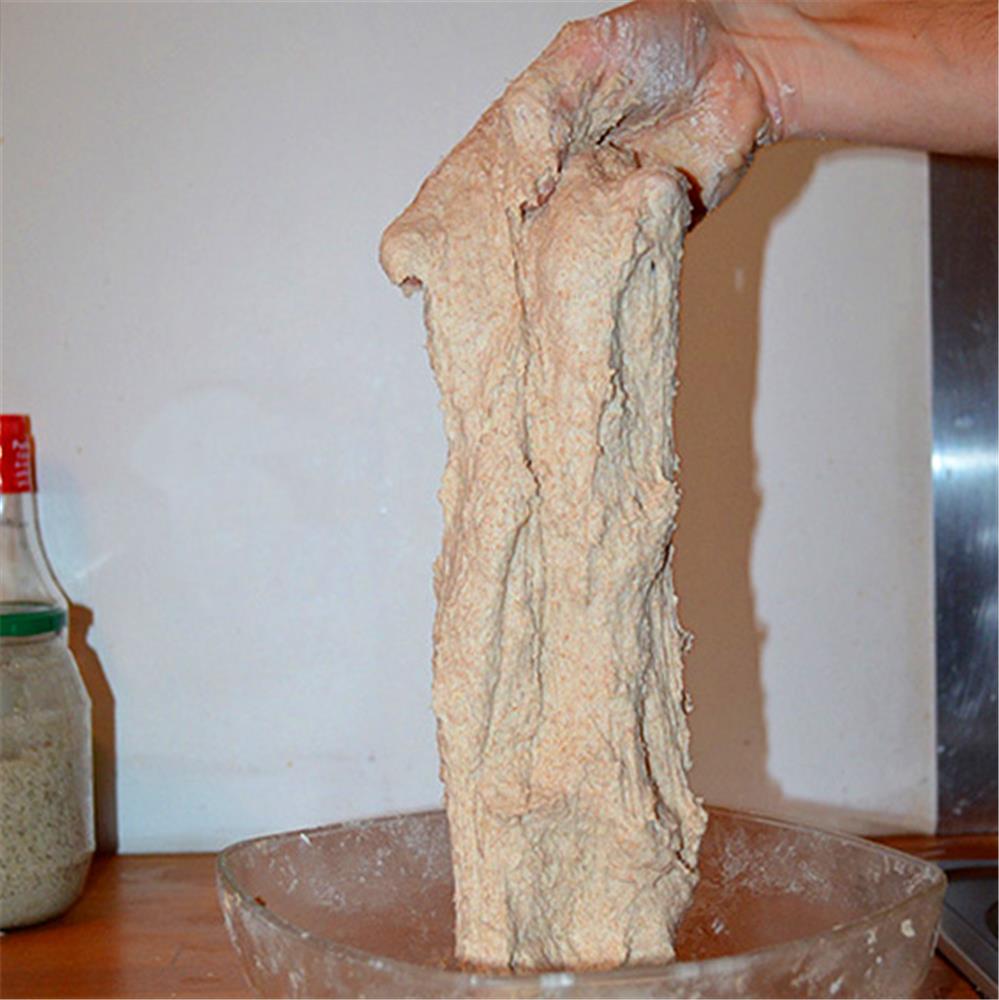For understanding and mastering how your bread dough rises.
Bread is a fermented food. Under the action of the ferment, or more exactly the micro-organisms that it contains, the sugar and the flour will decompose:
- into alcohol and carbonic gas if you use baker´s leaven.
- into carbonic gas and lactic acid if you use yeast.
In concrete terms, it makes bubbles, the dough will rise and that is what gives the bread its taste.
For the enzymes to work properly, the dough must be at the right temperature.
- Too cold and the micro-organisms hibernate, preventing the dough from rising.
- Too hot and they get overexcited and don´t do the job right. The dough will rise erratically and your bread will have no taste and will go bad quickly.
- Hotter still and you will kill the fermenting agents, the bacteria will die and your dough will not rise.
When you add pouring water that is more or less hot to the flour you obtain the desired temperature, but that is not all. When you knead the mixture, you incorporate the oxygen that the micro-organisms require. They will multiply and be more active. Above all, they will organise the gluten into a network. Gluten is to bread what pectin is to jam. Without gluten, dough will not naturally turn into bread. Gluten is what gives the dough its elasticity. It is also what imprisons the fermentation gas and makes the dough rise.
I will give you another tip: when your dough has been sufficiently kneaded, it will be elastic and make a ribbon that does not tear when you stretch it.
A simple formula can ensure that the dough will rise under the best conditions. It is the ""58 rule"". It is a very fast tip that is detailed in the feature ""Calculating the temperature of pouring water"".
(see the special feature ""Calculating the temperature of pouring water""
Some further information:
Apart from azyme bread and hosts, all bread has leaven. For other cooked flour that does not rise, the term ""bread"" is incorrect: they are generally pancakes.
Leaven
It produces little gas and the dough does not rise easily, but it does create lactic fermentation as with yoghurt, sauerkraut or dried sausage. This fermentation gives bread its inimitable flavour.
Baker´s yeast
Easier to use than leaven, it produces a lot of gas and the dough rises well. This is alcoholic fermentation. The alcohol, which is only present in tiny amounts, will evaporate during cooking.
Yeast over leaven
It is possible to combine the 2 types of fermentation and to add a little baker´s yeast to leaven dough.
Baking powder
We are no longer in the land of the living when it comes to baking powder as it does not use micro-organisms to produce fermentation gas and raise the dough. The gas is produced by contact with heat. Enthusiasts generally try to avoid it and prefer natural processes that are considered to be healthier and much richer in aromas.
Tap water
It works very well if it does not have a bad taste, but it contains chlorine which kills the enzymes in the leaven. Leave it to evaporate in a jug. After 3 or 4 hours, the water will have lost its chlorine.
Salt
It gives body to the dough, encourages elasticity, holds water and gives the crust a nice golden colour, but avoid placing it in direct contact with the leaven. If it is too concentrated, the salt will annihilate the action of the leaven, and when it is correctly measured and diluted, it regulates it. Professionals control fermentation by playing with the amounts of leaven and salt at a given temperature.
Gluten
Unfortunately, many people are allergic to gluten and have to resort to alternative solutions. But for flour to naturally convert to bread, it, it must contain gluten.





























































